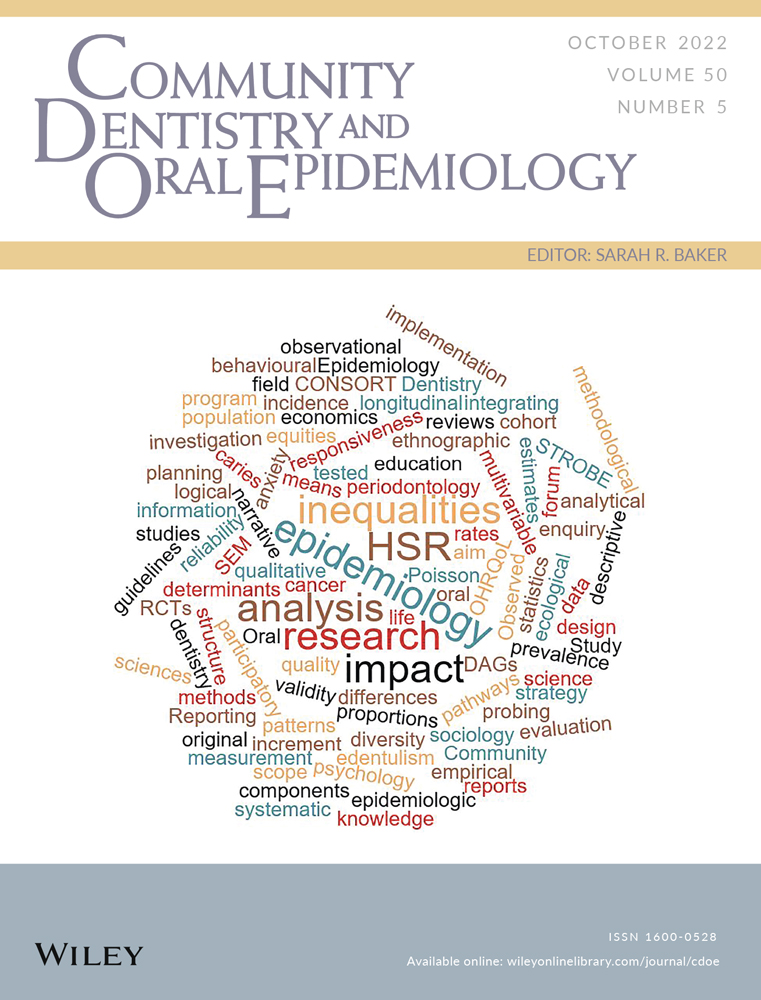Effect of oral health literacy on self-reported tooth loss: A multiple mediation analysis
Abstract
Background
This study aims to investigate the mediating pathways of oral health literacy (OHL) and oral health-related behaviours on the relationship between education and self-reported tooth loss among Australian adults.
Methods
Data used for studying the effects of mediating pathways are from the National Dental Telephone Interview Survey 2013, a random sample survey of Australian adults aged 18+ years. To study the mediating effects, we use counterfactual-based analysis. To decompose the effect of multiple mediator’s alternate, to natural effect, methods such as interventional effects have been proposed. In this paper, we use these approaches to decompose the effect between education, OHL and oral health-related behaviours on self-reported tooth loss. Sensitivity analysis was performed for unmeasured confounding with multiple mediators.
Results
Data were available for 2936 Australian adults. The prevalence of persons with ≥12 self-reported tooth loss was approximately 15%. The average total causal effect from the low education group was nearly 150%, and the interventional indirect effect through OHL and the dependence of oral health-related behaviours on OHL to more than 12 missing teeth were 20% and 120%, respectively, higher than in the high education group. Sensitivity analysis indicated if the difference in the prevalence of unmeasured confounder is as big as 6% the direct effect and the indirect effect remains as observed.
Conclusions
An additional two-fifths reduction on having more than 12 missing teeth for Australian adults with lower education level could be achieved if the proportion of lower OHL was decreased and optimal dental behaviours were increased.
CONFLICT OF INTEREST
The authors confirm that they have no competing interests.
Open Research
DATA AVAILABILITY STATEMENT
The datasets generated and/or analyzed during the current study are not publicly available due to privacy issues of the participants. Data are available from the University of Adelaide Data Access (contact via Australian Research Centre for Population Oral Health: [email protected]) for researchers who meet the criteria for access to confidential data.




